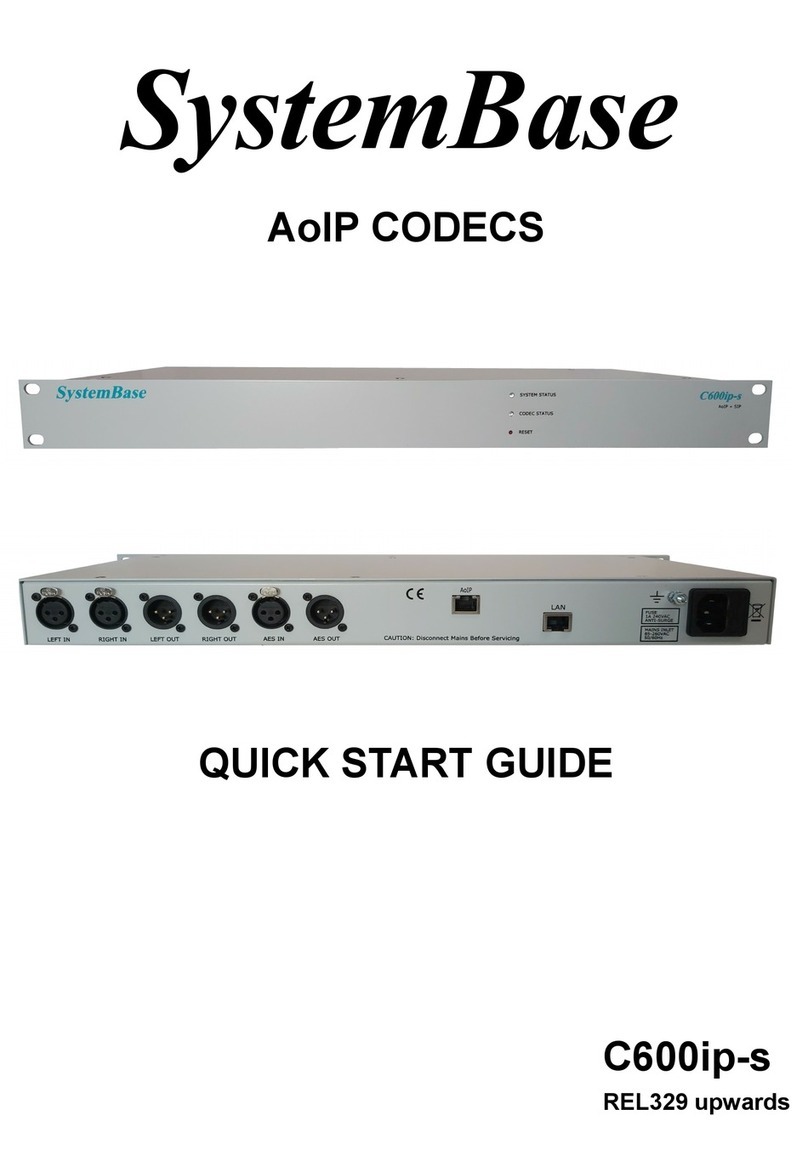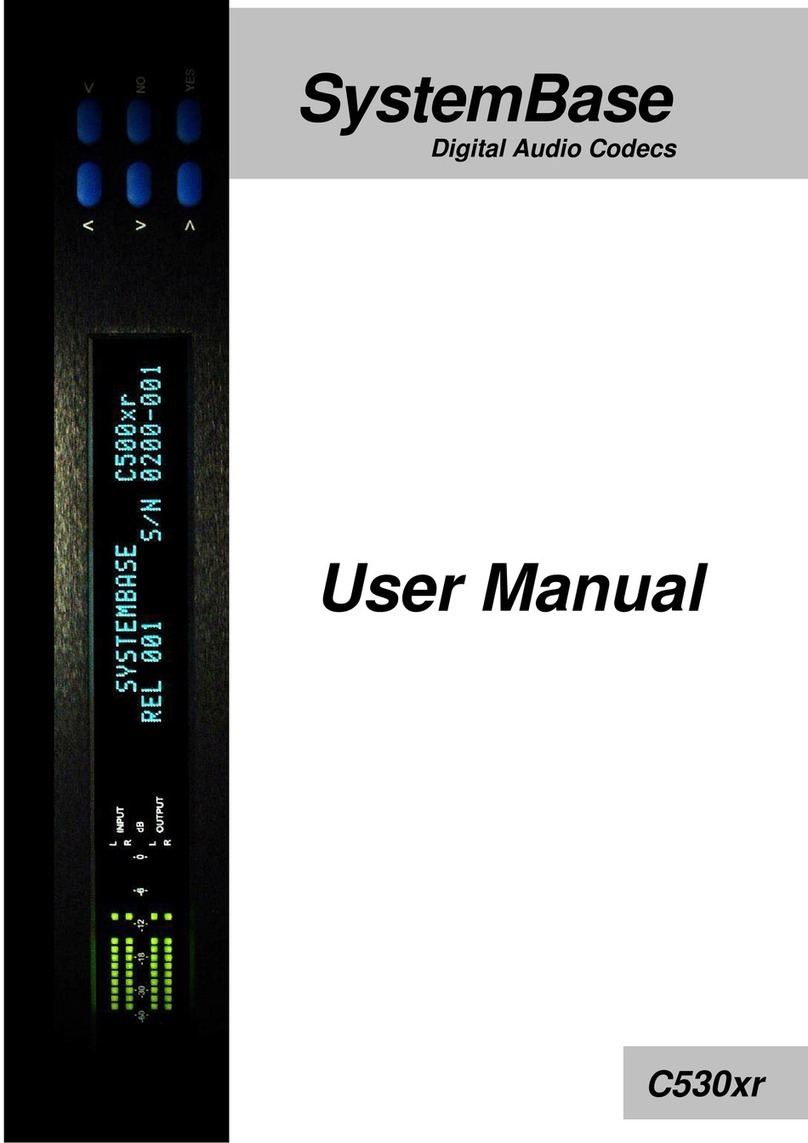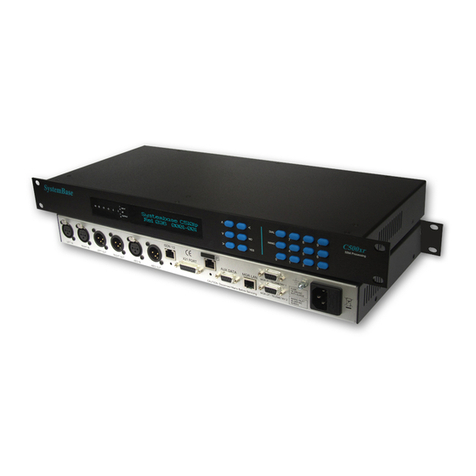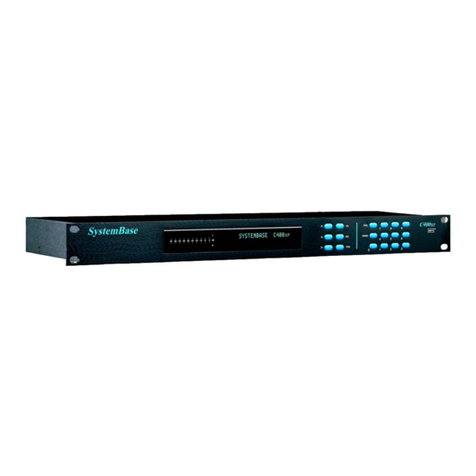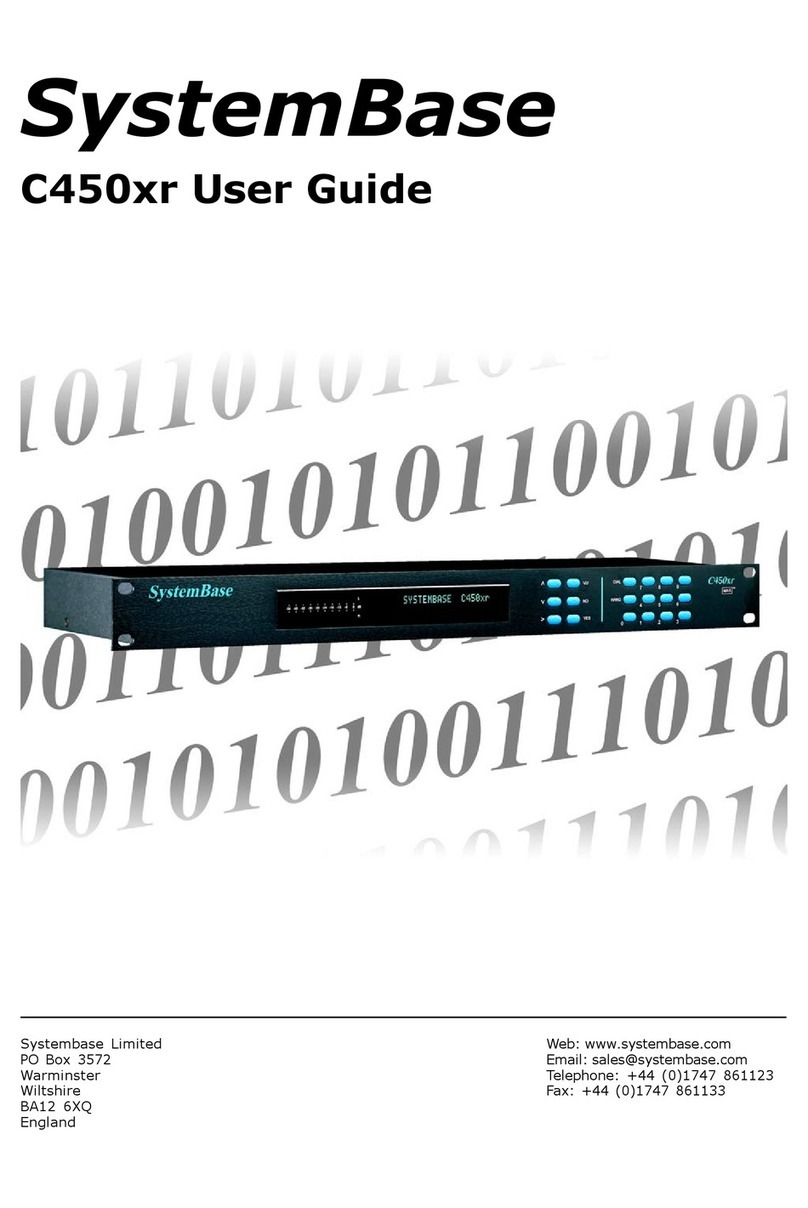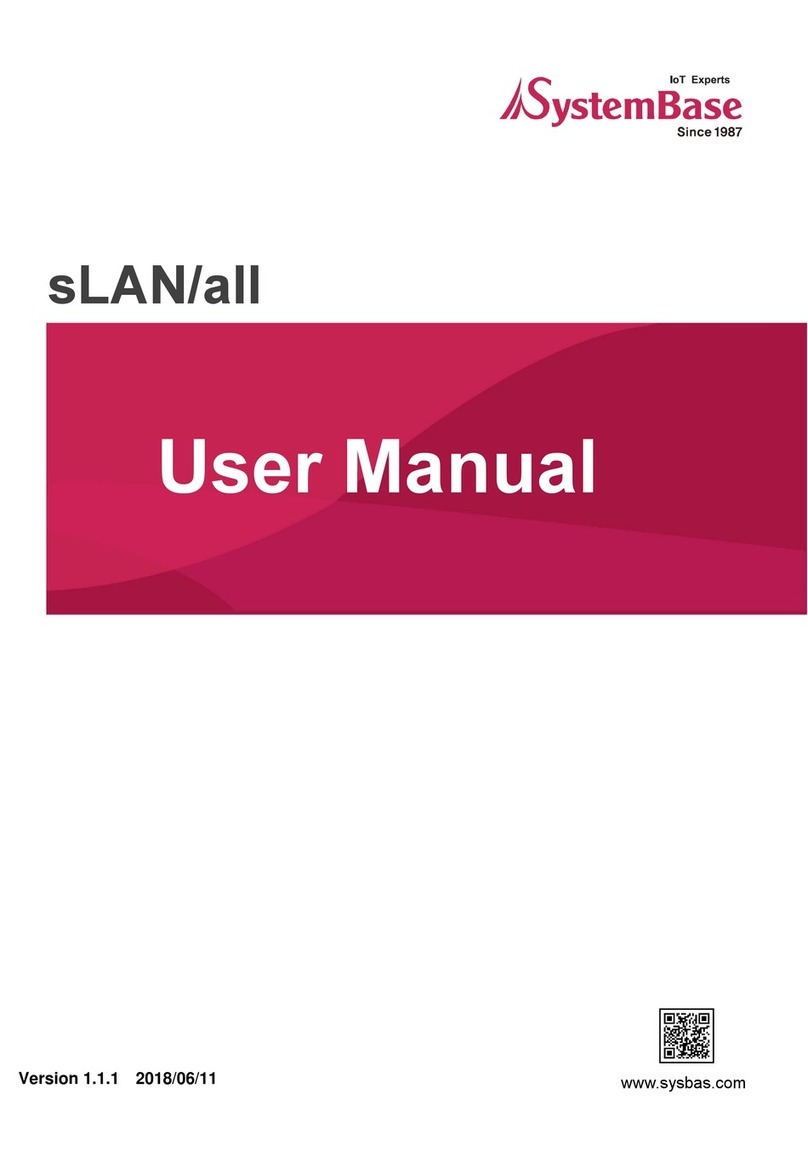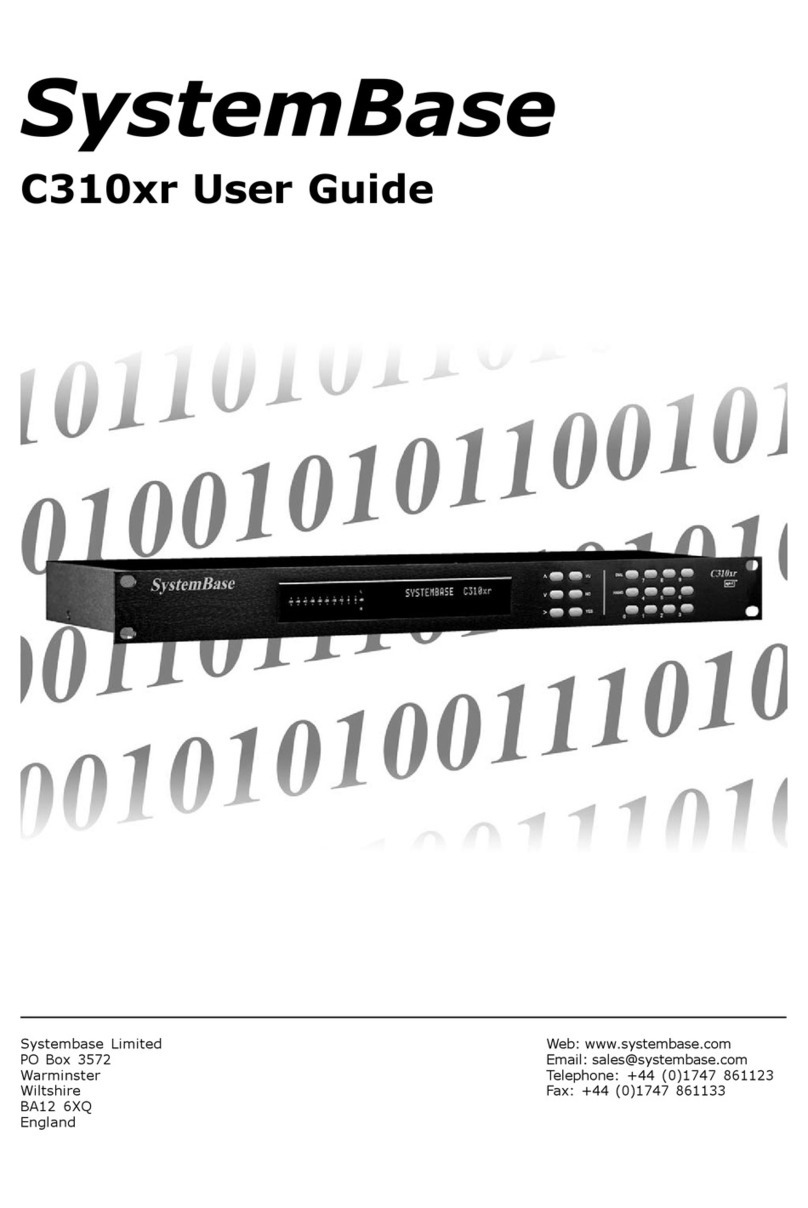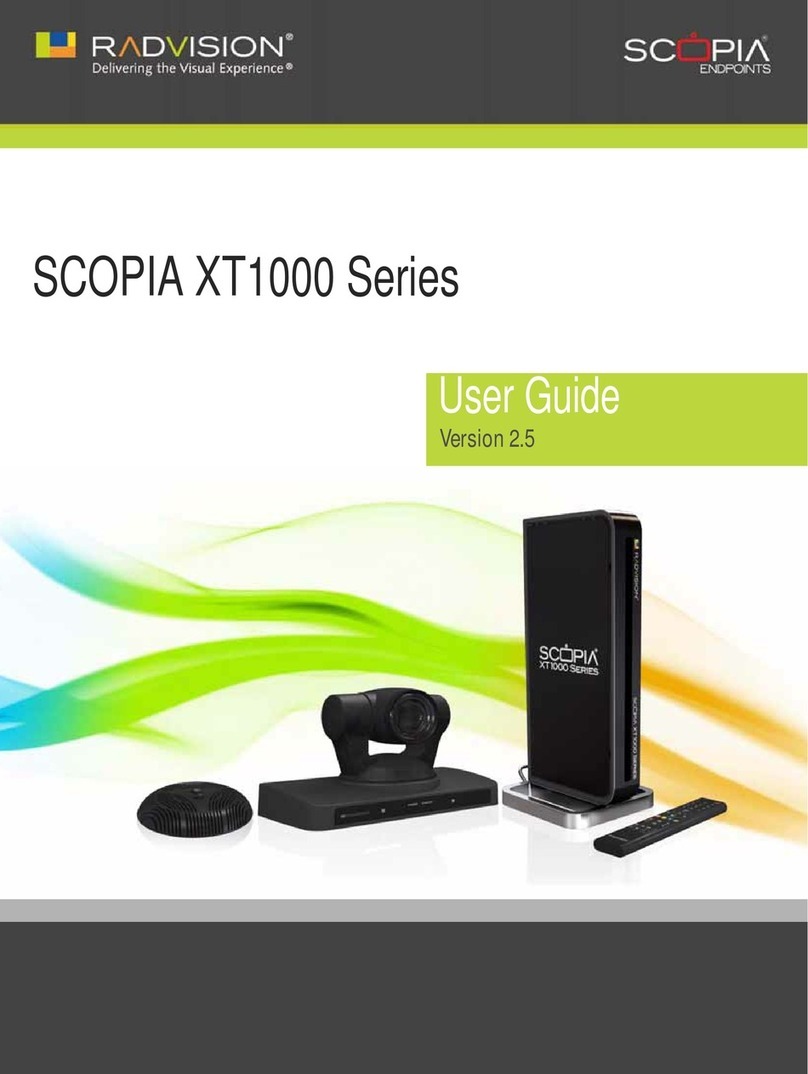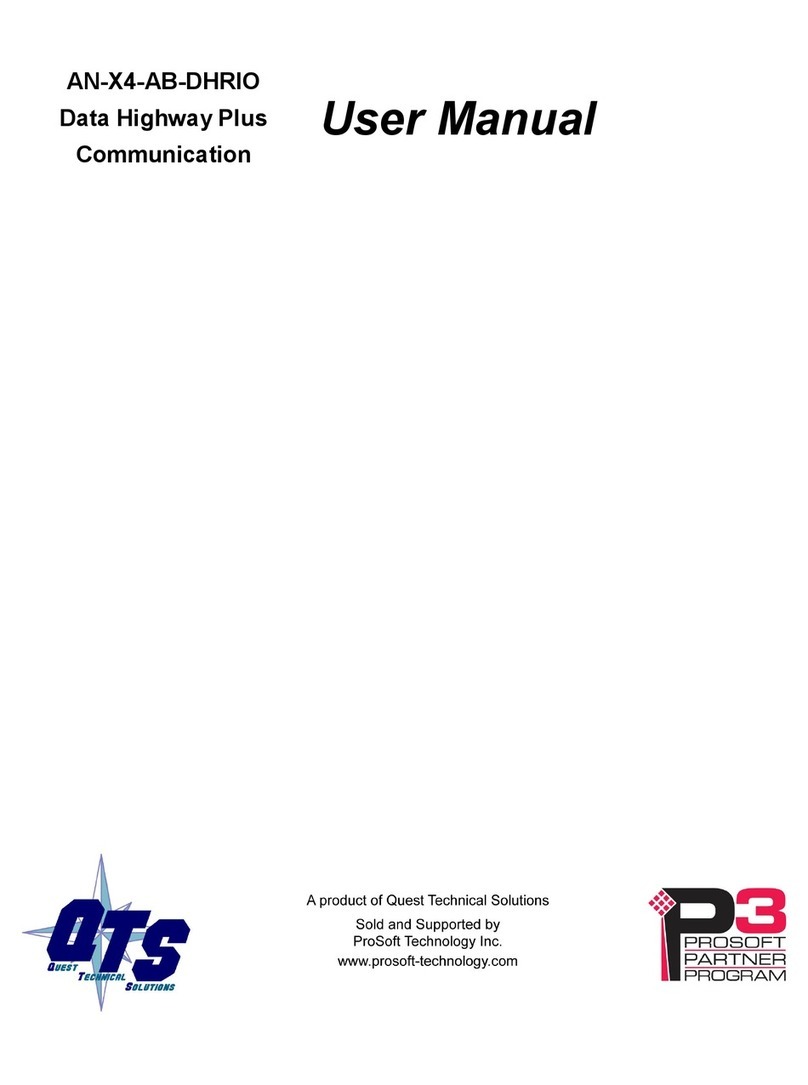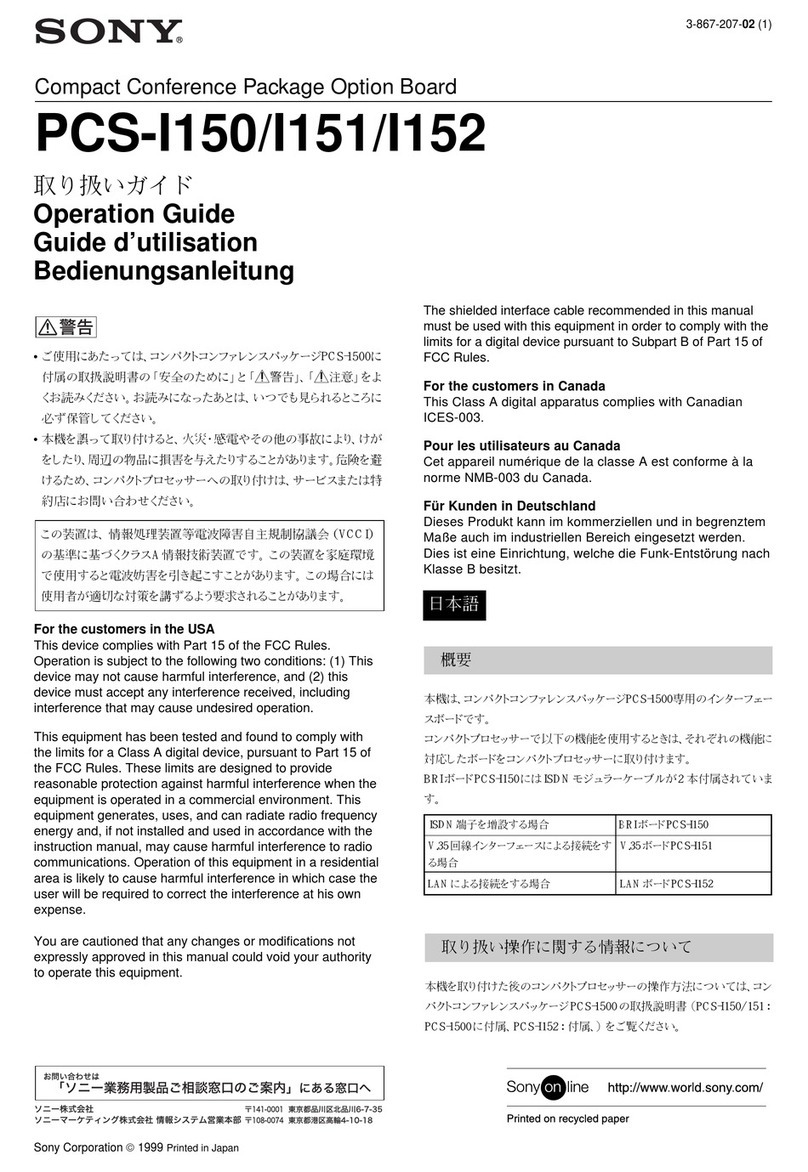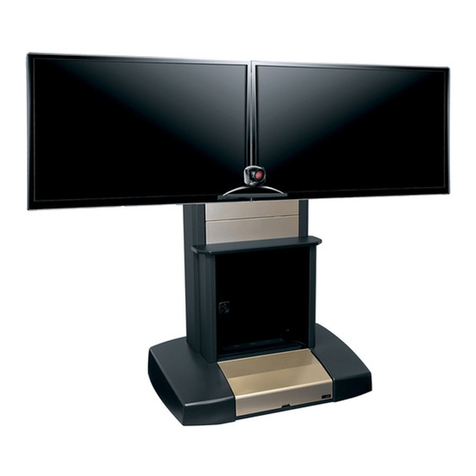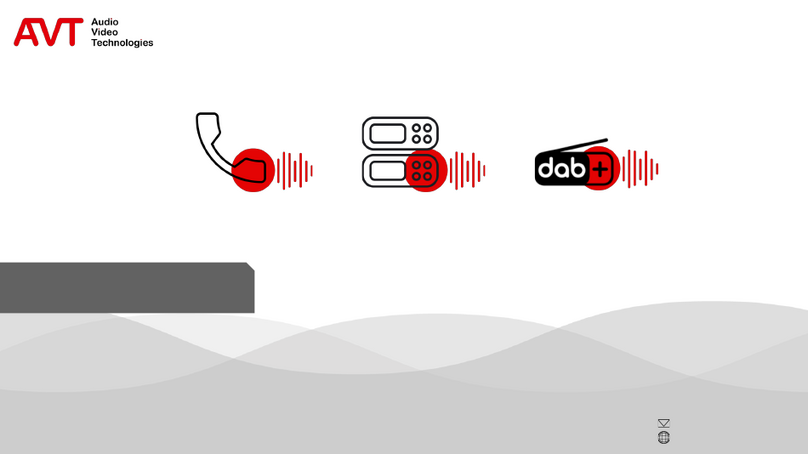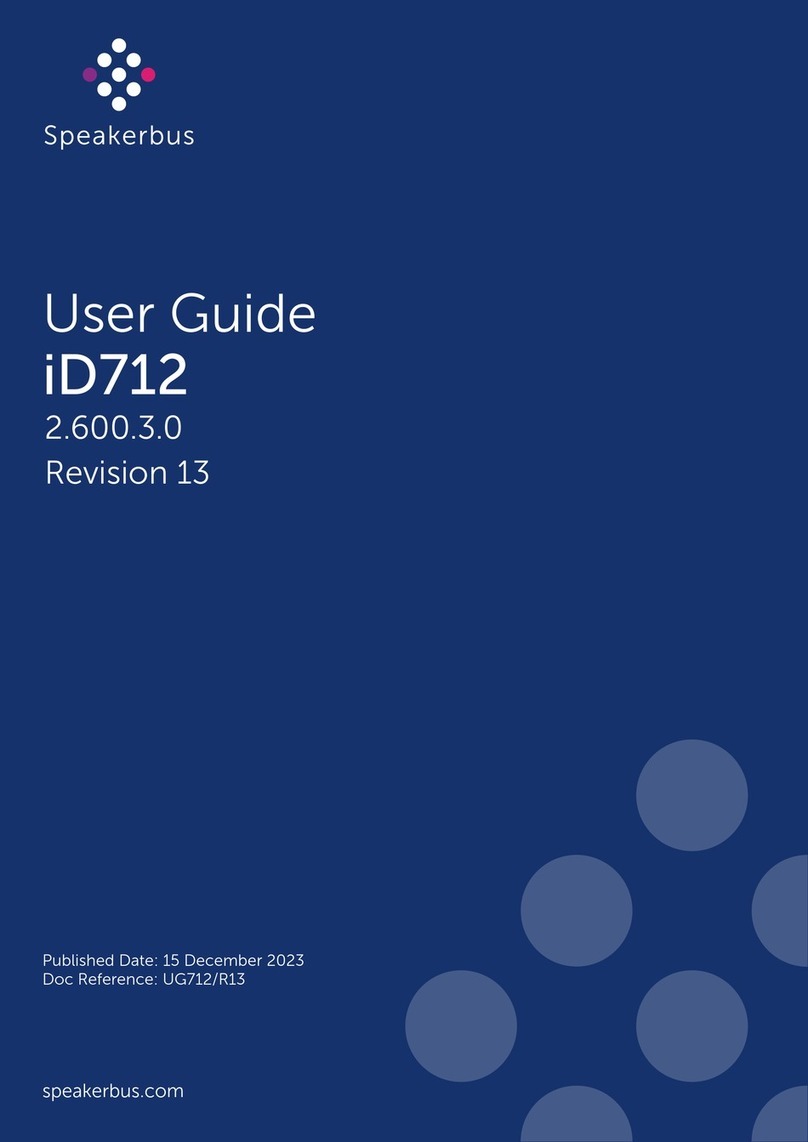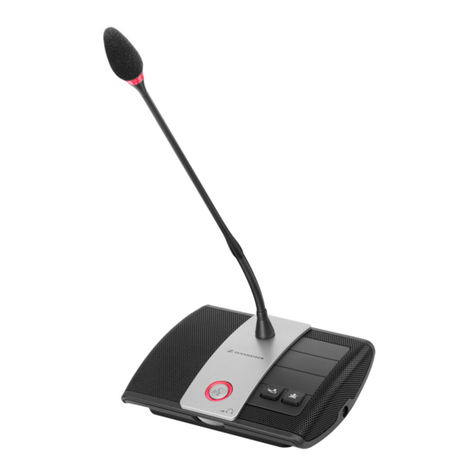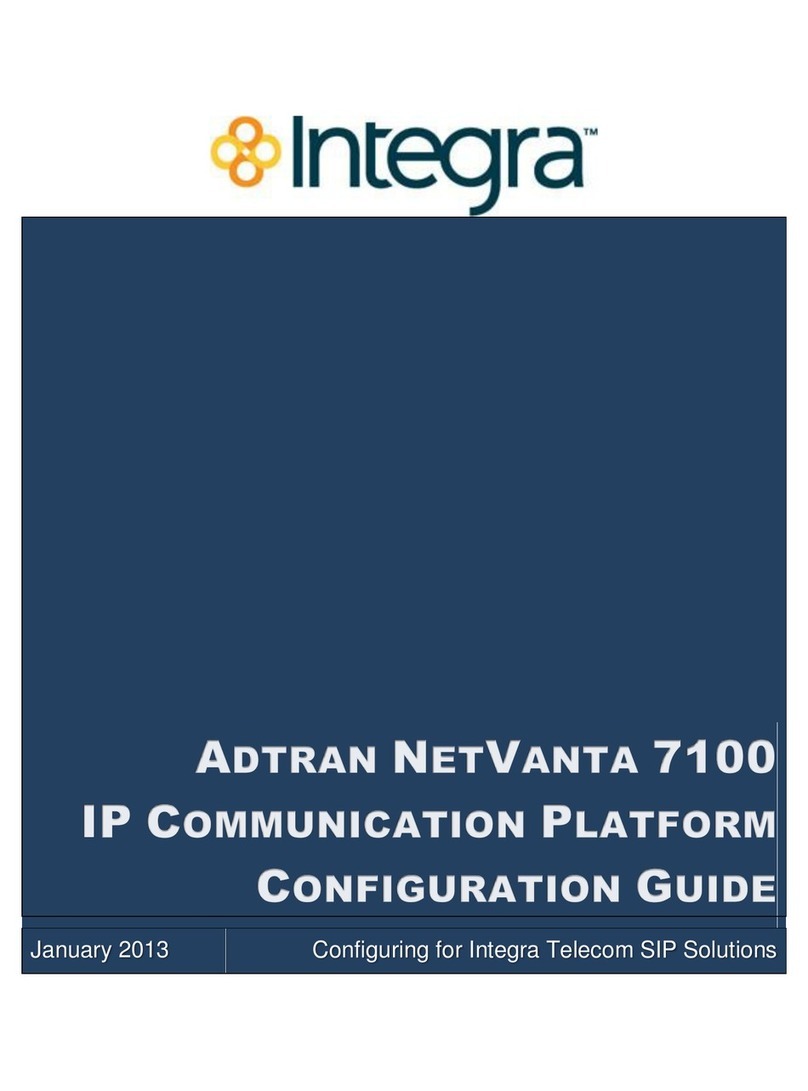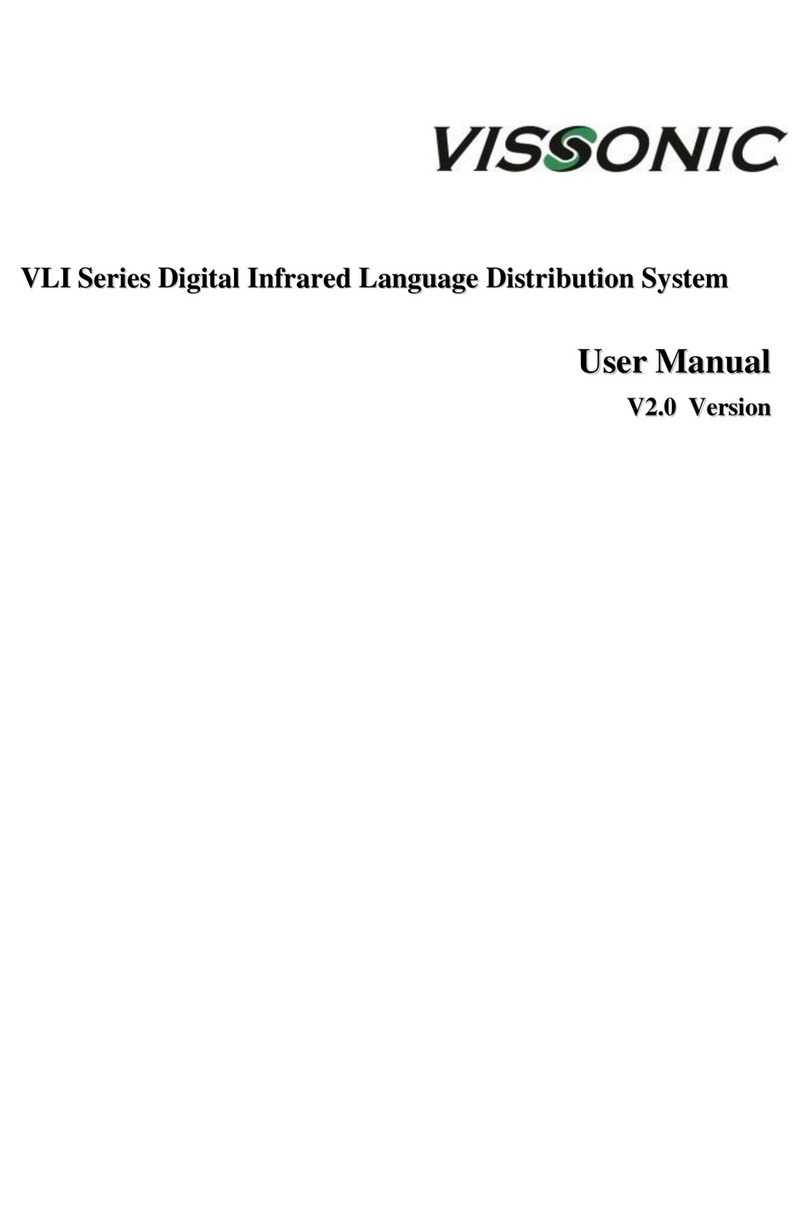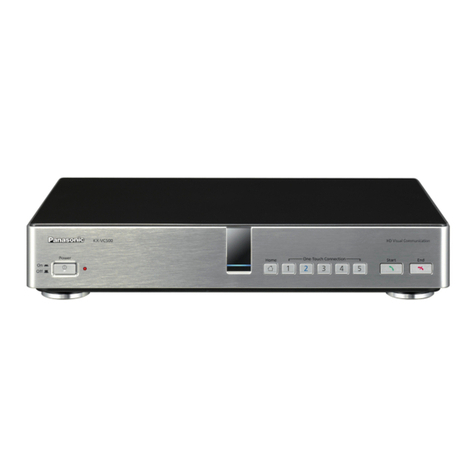
Table f C ntents
INTRODUCTION................................3
Key Features................................3
INSTALLATION.................................4
CONTROLS AND INDICATORS.......4
VFD Display .................................4
VU Meters.....................................4
Menu Buttons...............................4
DIAL Button .................................4
Keypad Dial..................................4
Patch Dial.....................................5
ANG Button................................5
Numerical 0 - 9 Buttons................5
FRONT & REAR PANELS.................6
MENU MAP.......................................7
MENU SYSTEM.................................8
Unit Description / Title...................8
ISDN Status..................................8
ISDN Caller Identification..............8
Clearing Cause.............................8
Audio Status.................................8
Select Patch.................................8
Modify Patch.................................9
Patch Name...................................9
ISDN Options...............................9
ISDN Audio Options...............9
ISDN Audio Format..........9
Audio Mixing....................9
Audio Priority....................9
Auto unt........................10
G711 Receive..................10
ISDN Channel 1 to 4 Options
...............................................10
ISDN Remote Address....10
ISDN Remote Sub-Address
.........................................10
ISDN Local Sub-Address 10
X21 Audio...................................11
Backup Options..........................11
Backup Monitor..........................11
Backup Threshold.......................11
Restore Time...............................11
Reserve Dial................................11
Audio Source..............................11
Codec Function...........................11
ISDN Mode.................................11
X21 Mode...................................11
Backup Master / Slave................11
Nailed ISDN...............................12
Auxiliary Data Port.....................12
Alarm..........................................12
eadroom...................................12
System Options..........................12
Country Options..........................12
ISDN Network.............................12
ISDN SPID C 1 to 4..................13
Password....................................13
Loopback....................................13
SNMP.........................................13
Ethernet Options.........................13
Ethernet D CP...........................13
IP Address...................................13
Ethernet Mask.............................13
Ethernet Gateway........................13
....................................................13
Set Defaults................................14
Screen Saver..............................14
Email Alert Messages.................14
Email Timing..............................14
WEB SERVER.................................15
EASYMON NETWORK MONITOR..16
REMOTE MANAGEMENT...............17
PHYSICAL CONNECTIONS............18
Analogue Audio..........................18
Digital Audio................................18
LAN Port.....................................18
ISDN Ports..................................18
X.21 Port.....................................18
Manager Input Port.....................19
Manager Output Port..................19
Auxiliary Data Port......................19
Alarm Signal...............................19
Remote Trigger...........................19
PHYSICAL PROPERTIES...............20
Dimensions.................................20
Power Requirements..................20
Environmental Conditions...........20
WARRANTY INFORMATION ........20
CE COMPLIANCE ..........................20
EXPORT REGULATIONS (EAR) ...20

